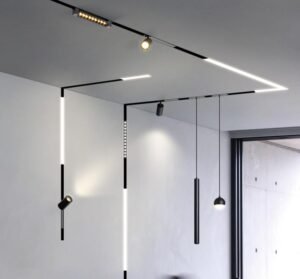Look at that face! Oh, the joy of mastering a balance bike! Your child can soon be balancing with the best of them – all that’s required of you is to provide time, a safe place to ride, and plenty of positive encouragement. Little or no instruction is needed because for the most part, kids instinctively figure it out for themselves. The advice below provides an outline of the natural process your child will go through in learning to ride a balance bike on their own.
What are the Stages of Mastering a Balance Bike?
There are 4 steps most riders go through in learning to ride a balance bike.
(1) Stand and walk
(2) Sit and walk
(3) Sit, run, and balance
(4) Sit, run, and glide
1. Stand and Walk (Typically between 18 months to 3 years old)
What your child will do:
When first learning to explore a balance bike, kids ages 18 months to 3 years typically stand over the bike frame and walk the bike as their first step. They don’t even try to sit on the bike and often resist the suggestion to do so. Some kids will walk the bike around the whole block, while others will only walk it several feet.
How long will this stage last?
The duration of this stage can vary greatly, but for almost all riders, it will be the longest learning stage. Some kids learn to sit and walk the bike during their first ride, while others can take months to get comfortable sitting down. The younger the child, the longer the standing and walking stage generally lasts.
What you can do to help:
During this stage, and all stages really, it’s best to follow your child’s lead. Allow them to walk on the bike as long as they need to. For kids who are slow to progress, be sure to provide them plenty of opportunities to ride as well as limit or prevent their interaction with tricycles or pedal bikes with training wheels.
2. Sit and Walk (Typically between 2 to 3 years old)
What your child will do:
Eventually, kids learn to sit on the bike’s seat, but once they do, they will still continue to walk the bike for a time. At this stage, the excitement for riding their bike tends to build as they begin to catch on to the idea of what a balance bike can do for them.
How long will this stage last?
Like the “Stand and Walk” stage, the younger or timider the child, the longer the “Sit and Walk” stage usually lasts. But once your child gets comfortable with sitting and moving at the same time, they realize that if they want to go fast, they have to run instead of walk. As a result, once sitting and walking is mastered, kids advance to the “Sit
and Run” stage pretty quickly.
What you can do to help:
During this stage, getting your child around other balance bike riders can be very beneficial. By watching other kids happily ride their bikes all around them, they will start to realize that bikes are really fun! Kids with competitive personalities also tend to try to keep up with other kids, which can help them transition to the “Sit and Run” stage.
Really timid riders, however, may become frustrated at how slow they are on the bike compared to others, and lose confidence in themselves. Like all things in parenting, try your best to determine if their personality will benefit from or be hindered by interaction with other balance bike riders.
3. Sit, Run and Balance (Typically between 2 and 5 years old)
Parents: be prepared to get in shape! When your child learns to run on their bike, you better be ready to keep up with them because they quickly learn to run fast!
What your child will do:
During this phase, kids learn to run on the bike and also master balancing. Most kids can figure it out on their own, but if they need some direction and don’t have the opportunity to be around other kids riding balance bikes, there are plenty of videos available on YouTube.
How long will this stage last?
Stage 3 is the shortest stage – once kids learn to run, they easily advance to gliding as well. Adventurous kids quickly transition through this stage (sometimes within a day!), while timid kids could take a few weeks.
What you can do to help:
Much more efficient than a tricycle or a bike with training wheels, kids are uninhibited on balance bikes and quickly learn they can go just about anywhere on their bike. As a result, it’s best to allow kids to practice in open areas where you don’t have to worry about them accidentally running into the street at the end of the block or quickly rolling down the driveway into the street. Be sure to take the time to instruct them about where they are allowed to ride and where they are not.
4. Sit, Run, Glide and Explore (Typically between 2.5 and 6 years old)
What your child will do:
During the last stage of balance bike mastery, a child experiences the final and most exciting part of his ride – the glide! This comes as a natural step for most kids and they figure it out on their own.
In this final stage of balance bike riding, anything is possible because your child is now a master of his bike! From skateparks and bike jumps to single-track trail riding and pump tracks,
preschoolers can essentially go anywhere and do anything on a balance bike.
How long will this stage last?
Many parents think that a balance bike is simply a means to an end – a tool to get their child to learn to ride a “real” bike. While this is partially true, the reality is that balance bikes are typically much more efficient, fit kids better, and are way more fun to ride than small pedal bikes (12” and 14”).
Don’t rush your kid – let them enjoy their balance bike until they express a desire to ride a pedal bike. They could be happily riding their balance bike for years!
What you can do to help:
For those kids who may need guidance in learning the glide, having them roll down a driveway or a grassy hill can help them learn more quickly. And for exploring – take your kids on trails, buy small ramps, go to the bike park! Your child’s balance bike adventures will largely be determined by where you take them to ride.
What About Falling off a Balance Bike?
Toddlers and preschoolers generally always fall hands first. As a result, gloves can be a great investment when kids are starting off on a balance bike (Zippyroos are a favorite of ours).
Generally, when kids do fall, they don’t fall very hard and typically don’t get hurt. As kids advance and become more adventurous on their bikes, they are more likely to get hurt during a
fall.
There are two main reasons that balance bike falls don’t usually result in major injury:
(1) Balance bikes are lower to the ground so kids have less distance to fall than when falling
off a bike with training wheels.
(2) Balance bikes don’t have any pedals or cranks arms for a child to fall on or come into
contact with as they fall.
—————————————————————————————————————————-
Thanks for check BeBeekids Article.
You can Check our Popular sale products of
3 in 1 kids scooter TF3-1
5 in 1 kids trike T5
Also you can contact us for details of Kids Trike Sales Agent for your country.
sales@bebeekids.com
Hope our innovative baby trike can helpful for your market.
BeBeekids Scooter Team: https://decentlux.com





